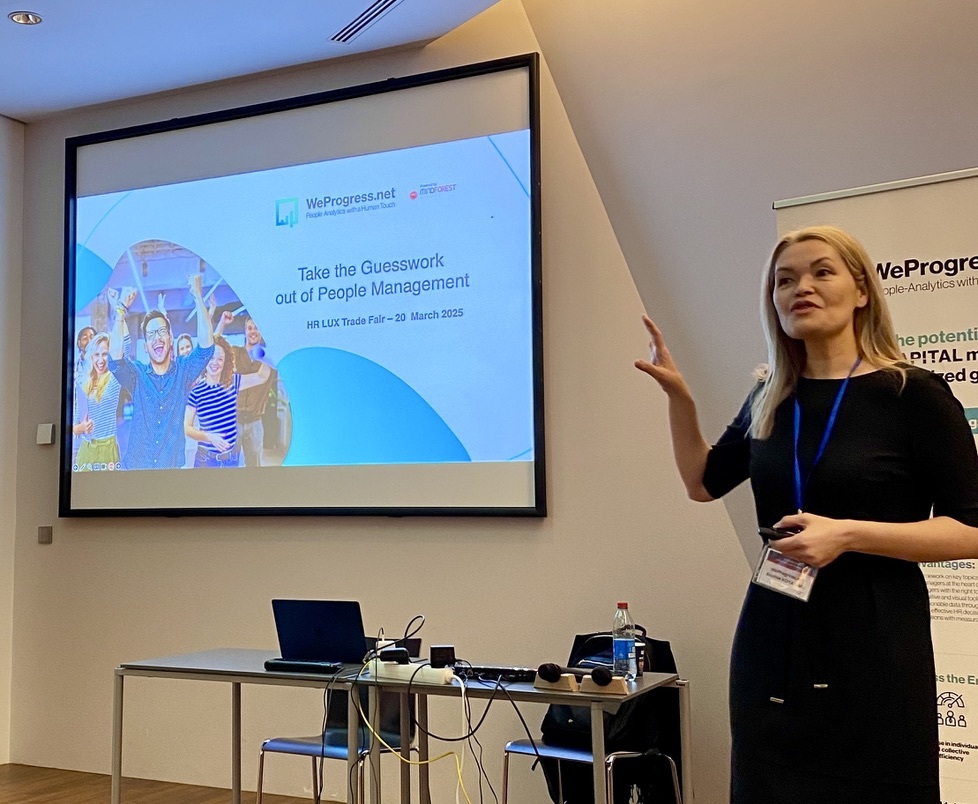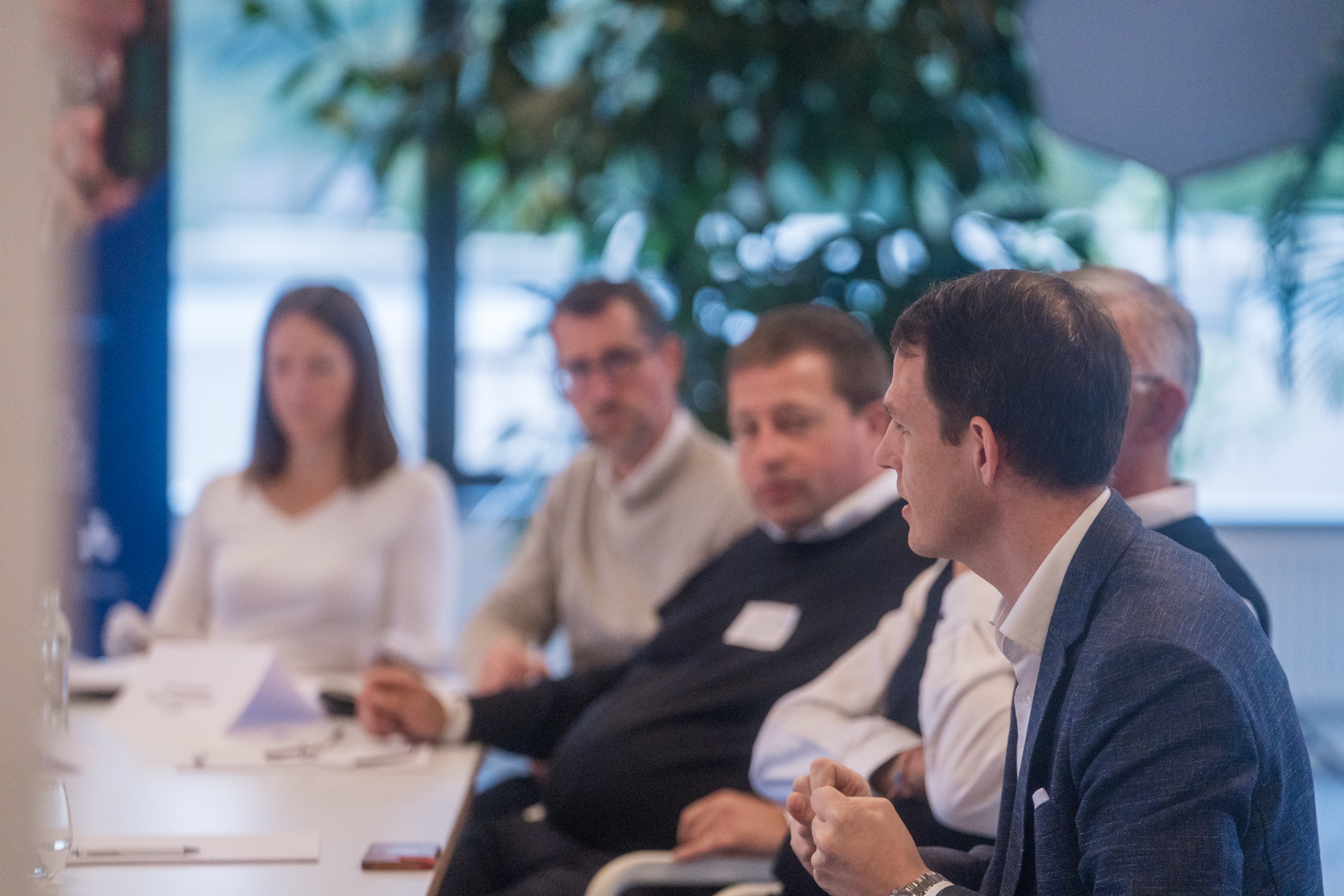Change is in the Air: Optimise Your Ways of Working
Two years ago, with enforced lockdown a massive shift to working from home took place – a concept which had been steadfastly rejected by most companies for a variety of reasons ranging from “we don’t have the equipment to work this way”, to “how can we be sure that people will really work”, etc.
Today working from home and hybrid working models are an imperative to remain attractive in a competitive market.
The only constant is Change
Change has been continuing at a fast pace when it comes to ways of working.
Thanks to the pandemic and the imposed home office, companies rose to the challenge and employees rapidly learnt how to launch zoom meetings and cope with online working sessions.
Managers, who at first doubted that productivity levels would be maintained, were mostly pleasantly surprised and employees started to see the advantages of this increased flexibility and inexistant commuting to improve work-life balance.
Humans are on the whole creatures of habit
Most of us remember how weird it was when we started wearing masks, now it seems weird to enter a shop without one! The same applies to work habits. Before lockdown, for the greater majority of the workforce the option of working from home did not present itself, it was not an option and therefore accepted as part of the way a salary is earnt: you show up at the office, you do your job, you go home.
Changing habits
Things have changed and for once it has been relatively easily accepted. Whereas the start of lockdown marked a pivotal moment when we had no choice – we were ordered by the government to stay at home – this does not apply to the forthcoming return to work.

For many it feels as though there is an element of choice… and given the choice many do not want to change back! Indeed, a recent Gartner poll has identified the following reasons why people do not want to return to the office[1].
Many of these factors are beyond the employers’ control, yet they are clear indicators about how people’s habits and needs have changed and the potential influence this will have on their decision making.
Work in progress
With the change in how we work, processes have been adapted to a remote or hybrid setting and even though everyone complains about online meetings, at least they do not involve traffic jams! Many of us have settled into the snug cocoon of our trusted environment, we are probably not even consciously aware of the fact that we have slowly lost contact with a lot of our colleagues and drifted away from a sense of mutual support and knowledge sharing.
Indeed, how can a company realistically measure whether there has been a fall in creativity? What can today’s results be compared with? Surely, we have all worked “together” on Miro boards and other online creative tools?
Maintaining (virtual) social contacts
Some companies have succeeded in maintaining the momentum of virtual contact since the initial enthusiasm for online wine tasting and cookery classes reached its peak, but for many this type of informal communication has slowly declined and with it the sense of belonging to a team. The change to home working was abrupt; the drift to home “snuggling” gradual and thus much less apparent.
In a recent memo to staff [2], Rich Handler, CEO of Jeffries Financial Group Inc., said
“we are mentally healthier when we are around each other regularly. Our juniors and mid-level partners need our empathetic seniors to truly lead them in person.” Time will tell if staff agree with this perspective.
Inevitably when someone works from home they set their own routine – as far as this aligns to scheduled meetings – some will start and finish early, others will do the opposite and some will not really have a set routine, but prefer to tackle each day as it comes. Thus, the first question which is raised with respect to returning to the office relates to core working hours: will they be defined? What about defined “in days”: it is all very well to state that employees may work two days from home, but will it be necessary to define which two?
These questions may seem relatively innocuous, but in actual fact if not clearly defined from the outset they have the potential to cause a lot of ill-will: what about the employees who always work from home on Monday and Friday and thus always have a “long weekend”? Do you need specific in-house days when all presence meetings should be scheduled? If an in-person meeting is scheduled on a day when an employee normally works from home, will they still have to attend in person? Will you allow everyone to define their home-working days ad hoc or must they be agreed and fixed?
Depending on your field of business, the immediate clarification of such questions can be essential to ensuring that schedules are accepted and respected.
Talk to your staff
The best way to get to grips with these issues is to talk to your staff, organise working groups to get a representative idea of the opportunities and constraints to ascertain how they see the return to work. There are many possible ways to combine in-person and remote work, and whatever you decide on now will remain in place for years, so you need to get it right!
Review your ways of working

Help your staff to see this as an opportunity to embrace new methods and processes, which are adapted to take recent changes into account. The period of working from home has probably accelerated your transition to a paperless office, so reappraise your workflows and ensure that everyone has the access to information and tools they need and do not fall back into old habits now they don’t have to pay for the printer cartridges and paper themselves!
This is the moment to reassess work processes and make any necessary changes to take into account the new ways of working. It is perfectly possible that workflows had to be adapted to suit home working restrictions and/or requirements:
Should this new situation be maintained or is it preferable to return to the “old”approach?
The people concerned will know best, do not make the mistake of taking decisions without consulting them, as this will only cause resentment and conflict. Ask them what went well, concentrate on all the positive aspects and encourage them to make suggestions.
A tailored yet structured approach
At MindForest, we support our clients in their workplace strategy projects by following these steps towards defining the best model to meet their specific needs:
- Assessment of status quo
- Define your ambition
- Communicate on your project
- Design and Co-create
- Testing and Implementation
- Monitor and Iterate
An analysis of current needs and maturity levels is an essential precursor to defining what you want to achieve with your NWoW project. Allow plenty of time for an in-depth examination of why you are embarking on this news path as well as all aspects concerned, e.g. digital maturity, your current and future office culture, stakeholder interests, before taking any decisions and start communicating about the approach from the outset.
As with any change project, transparent and timely communication is key to increase understanding of the project and decrease resistance.
Get you employees involved; ask your people to contribute, make them feel part of the project, listen to what they have to say and show that their input is valued.
Once you have gathered sufficient information, you can start to co-create and test your NWoW before rolling it out to the whole company. Remember to continue asking your staff for feedback, iterate necessary aspects and maintain a certain degree of flexibility whilst defining, implementing and optimising the overall approach.
Flexibility: one size fits all ?
There is no such thing as a solution, which suits everyone, but consultation can help to find the most acceptable and above all the fairest approach. Make sure that the new rules of engagement are clearly defined and apply to all employees. Take time to define them and thus avoid the need for adaptations; the best way to do so is to organise internal meetings involving the different teams and/or departments.
Do not hesitate to put the topic of internal mobility on the agenda, some of your staff may already be assuming tasks once attributed to other colleagues, what are the logical next steps ?
You may also need to adapt your talent strategies to meet the challenge of increased digitalisation and to retain your talents.
Some companies are hiring Chief Happiness Officers in the hope of combatting the threat of staff leaving. Surely an employee who is dissatisfied with his/her workload and prospects will not be tempted to stay with the company because of “a table football and a basket of fruit”! Many have decided to move on, because of issues affecting the way they work, which have not been addressed by management. Managers need to reconnect with their teams and to listen to them; the mere opportunity to express one’s opinion can often go a long way to resolving a situation and reassuring an employee that they make a valuable contribution to the company. There is little worse than spending a large slab of each day doing something, which you feel is underrated, no wonder so many people decide to look for new meaning in their lives.
What’s in it for me ?
Never forget that equality needs to be applied across all employees; everyone will have a reason why they should be allowed to do XYZ, so limit the exceptions to the rule to an absolute minimum or you will soon face increasing dissent. Many employees enjoy seeing their colleagues regularly, they welcome the chance to re-open social contacts and have easier access to knowledge sharing. Their interaction with their colleagues will enhance the feeling that the work they do has a meaning and that their contribution is appreciated.
The prospect of working from home for a couple of days a week may make commuting on the other days more bearable. Perhaps this could even be woven into the fabric of the new approach to work thanks to the launch of an internal book club or access to subsidised online subscriptions to relevant publications/websites, which could then be used while travelling…there are a vast range of options, now is the time to make the most of them.
Use your communication tools to create a positive attitude to returning to work, encourage your staff to redecorate their offices (if company policy allows), have new corporate pictures taken and put them on display in the main entrance hall, create a sense of belonging: together we are the solution. Organise team lunches, lunchtime learning sessions, afterwork get togethers, the added value of being back at the workplace must be gauged in terms of increased, high value personal interaction.
Seize the opportunity
The moment has come to take a considered look into the way you want your staff to return to work, do not miss this opportunity to create your workplace for the future. Show your employees that you value them as people, not just workers. Bear in mind that some staff may have joined the company during the past two years and so will never have experienced what it is like to work with their colleagues in person. Perhaps it will be necessary to implement a sort of mini onboarding process for them, after all they may soon be entering the building for the first time!
Your definition of a great place to work
There has been much talk about the “great resignation”, especially as the current job market may entice employees towards new opportunities, so you need to get this transition to whatever your NWoW is right. Different generations will inevitably express different attitudes and every company can benefit from a diverse mix of staff to ensure creativity and innovation. Try to bear this in mind when you work on this challenge: how can you create a workplace they will love? A workplace which will foster both autonomy, belongingness and competency within the workplace?
Your people are your greatest asset and should be made to feel as such. Whether you talk about happiness or satisfaction; a contented workforce will be more creative, produce better results and is also more likely to remain loyal.
”People are definitely a company’s greatest asset. It doesn’t make any difference whether the company’s product is cars or cosmetics. A company is only as good as the people it keeps.”
To quote Mary Kay Ash [3]
[1] Gartner 2022 poll; graph published 11.04.2022 on Bloomberg website article by Matthew Boyle “Return-to-Office Plans Unravel as Workers Rebel in Tight Job Market”
[2] Quoted in article published 11.04.2022 on Bloomberg website by Matthew Boyle “Return-to-Office Plans Unravel as Workers Rebel in Tight Job Market”
[3] Mary Kay Ash CEO of Mary Kay Cosmetics
WANT TO RECEIVE OUR LATEST THOUGHT LEADERSHIP CONTENT?
Related posts
 Take the Guesswork out of People Management
Take the Guesswork out of People Management
 From processes to people: achieving quality
From processes to people: achieving quality
 Daring to lead Positive Transformation: What if Positive Emotional Capital was your key to sustainable change?
Daring to lead Positive Transformation: What if Positive Emotional Capital was your key to sustainable change?
 Why hire Change management professionals? We can do it alone!
Why hire Change management professionals? We can do it alone!
 Digital Transformation and Change Management: Lessons shared in an event hosted by Cebi and MindForest
Digital Transformation and Change Management: Lessons shared in an event hosted by Cebi and MindForest



